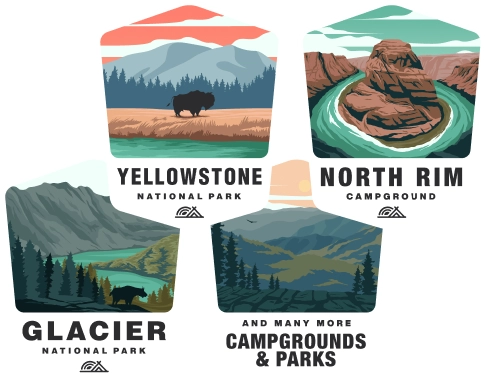Camping at Big Bend National Park Backcountry Camping Campground
General Overview
Big Bend National Park is a vast expanse in southwest Texas where the Rio Grande River creates a natural boundary between the United States and Mexico. The park is known for its stunning desert landscapes, mountain terrain, and diverse wildlife. Backcountry camping in Big Bend allows adventurers to immerse themselves in the park's remote wilderness areas.
Backcountry Camping Permits
Permits and Reservations: All backcountry camping in Big Bend National Park requires a permit. These can be obtained at visitor centers during business hours. Reservations for backcountry sites can be made up to six months in advance through the National Park Service's reservation system.
Fees: There is a fee for a backcountry use permit, and the cost is subject to change, so it's recommended to check the latest fee structure on the park's official website.
Permit Limitations: There are a limited number of permits issued each day to minimize environmental impact. It's best to secure permits early, especially during peak seasons, which are typically fall and spring.
Choosing a Campsite
Developed Campsites: There are established backcountry roadside campsites suitable for vehicles. Sites typically include a parking area, but no other facilities.
Primitive Campsites: For a more remote experience, you can opt for a primitive campsite accessible by hiking or backpacking. These sites are located in various zones throughout the park and provide a more isolated wilderness experience.
Chisos Mountains Campsites: Specific backcountry campsites are available in the Chisos Mountains, which are at a higher elevation and offer cooler temperatures, especially during the summer months.
Safety and Regulations
Water: Water sources in the backcountry are scarce, and streams or springs should not be relied upon. Visitors must bring all the water they will need for the duration of their stay.
Wildlife: The park is home to a variety of wildlife, including mountain lions and black bears. Proper food storage and disposal are essential to prevent attracting these animals to your campsite.
Weather: The desert climate can produce extreme heat during the day and cold temperatures at night. Campers should be prepared for the weather and always carry a map and a compass or GPS device.
Leave No Trace: Practicing Leave No Trace principles is crucial in the backcountry to protect the park's delicate ecosystems. This includes packing out all trash and minimizing your impact on the environment.
Campfires: Due to the dry desert environment, campfires are typically not allowed. Use a portable stove for cooking.
Pets: Pets are not permitted on trails or in the backcountry to protect the park's wildlife as well as your pet.
Planning Your Trip
Timing: Plan your backcountry camping trip according to the season that suits your comfort and preparedness level. Summer temperatures can be extreme, and winter can bring cold snaps.
Preparation: Make sure you have the appropriate gear for backcountry camping, including a tent, sleeping bag, cooking equipment, and a first-aid kit.
Check-in: Always check current conditions with a park ranger and inform them of your plans before departing on your backcountry adventure.
Emergency Preparedness: Since you'll be in a remote area, have a plan for emergencies. Understanding the symptoms of heat-related illnesses, carrying a personal locator beacon (PLB), and knowing basic first aid can prove to be lifesaving.
Enjoying the backcountry in Big Bend National Park offers an exceptional opportunity to connect with nature and experience the beauty and solitude of the desert. With proper preparation and respect for the park's regulations and the natural environment, your backcountry camping trip can be a memorable and rewarding adventure.
